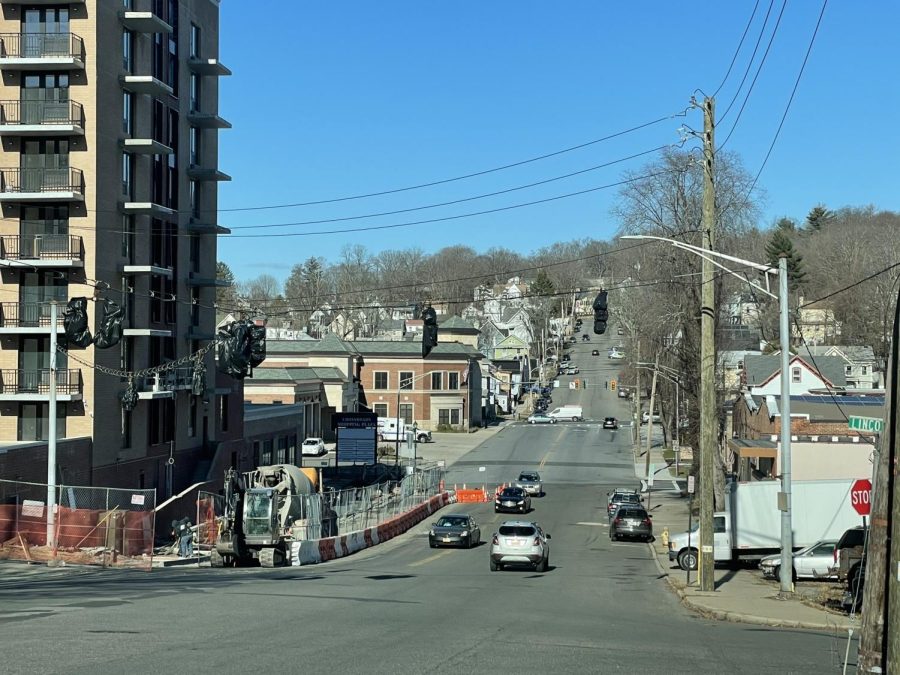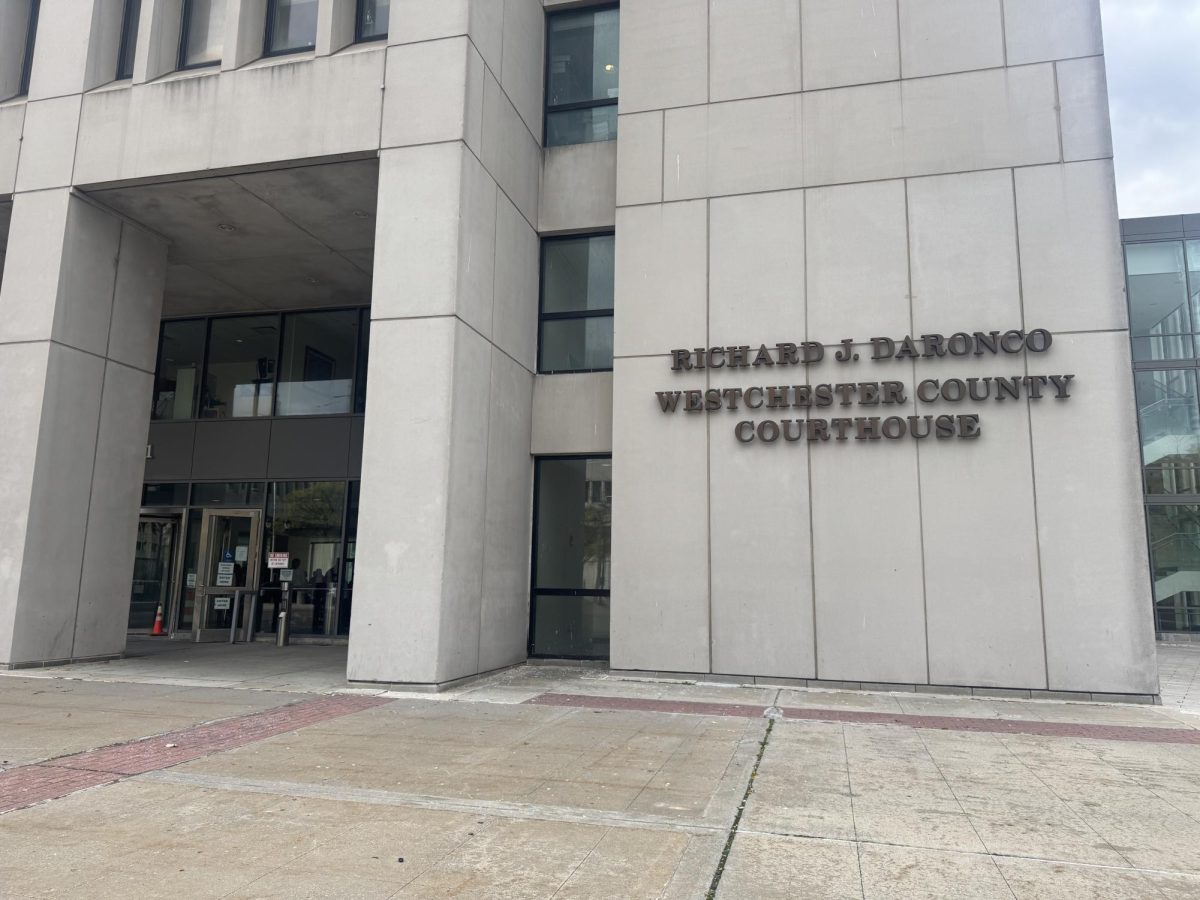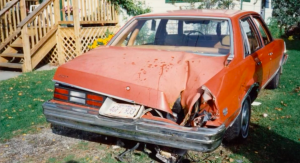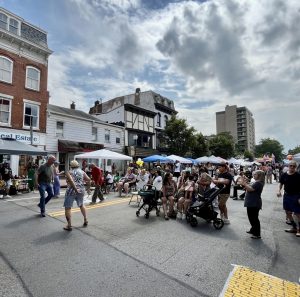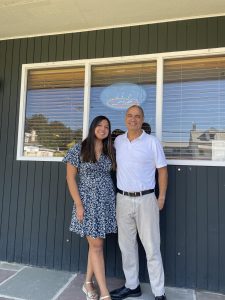‘Friendly Town’ Wasn’t Pedestrian-Friendly this Year
Pedestrian vs Car Collisions Up 328% in 2022
December 20, 2022
Peekskill Herald asked graphic designer Lise Prown to create an interactive map with information from Peekskill Walks about the specifics of car/pedestrian incidents in the past two years. Readers can zoom in and out on the red and yellow stars and read the specifics on each incident. The resident-led civic group, Peekskill Walks, has been compiling data on the number of pedestrians hit by cars and has led the conversation around making Peekskill a pedestrian-friendly city.
A crash involving a pedestrian and a car on Washington Street a week ago brought the total number of pedestrian/vehicle incidents to 23 for this year according to Peekskill police records. That’s more than triple the total of seven such reported incidents in 2021.
“It’s a multitude of problems,” said Peekskill Police Chief Leo Dylewski about the increase of incidents. “It’s drivers not paying attention because they are looking at the entertainment systems on their consoles. It’s pedestrians not paying attention because they’re looking at their phones and have earbuds in.” Over the past few months the department has increased crosswalk enforcement along with vehicle enforcement, and officers are writing vehicle and traffic tickets every day, said Dylewski. “We are being proactive with the resources we have,” he added.
“The number of people being injured on our streets is a public safety crisis that puts every single resident at risk. We’re relieved the city has recognized this problem and is taking some steps in response, but more urgency and action is needed,” said Peekskill Walks co-founder Conor Greene.
Peekskill Walks, formed in 2019, is an outgrowth of the Peekskill Community Congress where nearly 1,000 people voted in favor of the proposal to make Peekskill a model walkable city. Co-founders Margaret Steel, Conor Greene and Greg Gutkes said Peekskill is walkable by default, but it isn’t pedestrian-friendly – and their goal is to raise awareness and suggest actions to make the city safer for pedestrians.
According to Greene, studies have shown that walkable cities see an increase in residential property values, growth in jobs, local businesses do better, and it’s a step toward climate accountability. And there are social benefits, too, he adds: children can gain independence by walking to school, senior citizens stay healthier and happier for longer, and it fosters social interaction.
Those studies will soon begin translating to reality in Yorktown, where Town Supervisor Matt Slater announced a $1.7 million streetscape project for Downing Drive, in a first step toward making the hamlet more walkable, safer and business friendly for residents and visitors.
Peekskill Walks, which reached 600 followers on their Twitter account this month along with some 2,000 followers on Facebook and another thousand on Instagram, relies on citizens to alert them about crashes. There is robust discussion on the social media accounts of Peekskill Walks concerning reckless driving on city streets that contribute to pedestrian accidents – including pictures of flagrant violations of traffic law.
On a social media post recently there was a picture of a wrong-way driver traveling north on Broad Street in the southbound lane. Chief Dylewski said when things like this happen, ”people are impatient and don’t fully understand the consequences of their actions.”
Chief Dylewski, who is part of a Quality of Life task force that meets weekly at City Hall, said the long out of service traffic lights at Broad and Brown Street will be operational shortly, and another set of lights will be installed at Broad and Park Street to slow down traffic on that part of the road.
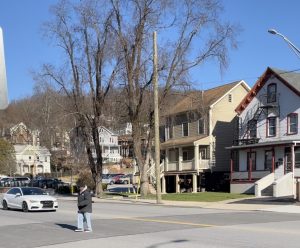
Peekskill Walks’ proposed strategies for safer streets include employing design modifications, making it harder for drivers to speed. Suggested changes include narrower lanes, curb extensions, wider medians, raised crosswalks, and working crosswalk signals. They often post images and articles showing how other cities implement safety features. Much conversation centers around holding reckless drivers more accountable including via camera equipment. Municipalities cannot put cameras on traffic signals to enforce traffic laws without an act of the state legislature, Dylewski explained.
The speed bumps at Hudson Avenue and Wells Street have been “100 percent successful in slowing down the traffic there,” said Dylewski, but noted that they were removed because they would be shredded by plows during the winter. “April 1 they will be back, along with some in the train station area to control traffic,” said Dylewski.
Signals at crosswalks that aren’t working are another issue causing pedestrian accidents, and the city is working with a contractor to replace them, said Dylewski. There are currently 11 traffic signals that need replacing according to Peekskill Walks.
“City Hall’s recent focus on broken pedestrian signals, streetlights and crosswalks is a good first step. However, we cannot respond to a crisis by just doing routine maintenance. We need to actually address the root causes of the problem — poor street design that prioritizes cars over people, and the culture of dangerous driving that’s been allowed to become routine, in addition to the maintenance issues,” said Greene of Peekskill Walks.
Dylewski noted that not every pedestrian vehicle crash is the fault of drivers – and cited a number of cases involving pedestrian intoxication, inattention, and riders of e-bikes not following traffic laws. “We take pedestrian safety very seriously and are working to enforce the rules,” he added.




